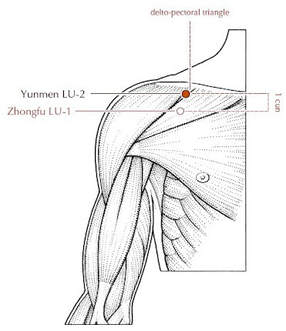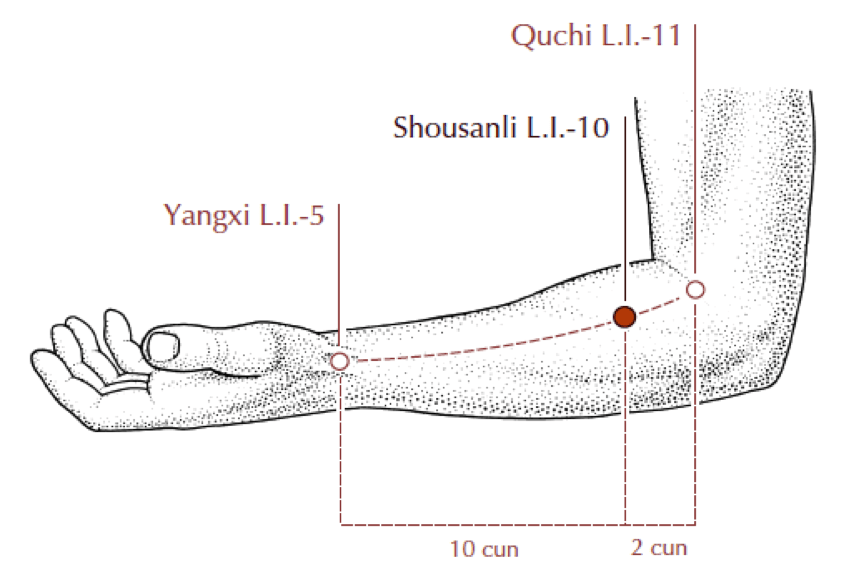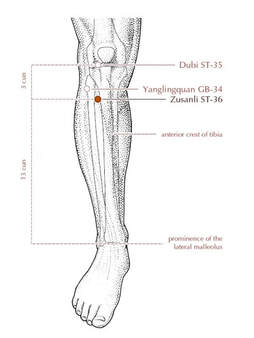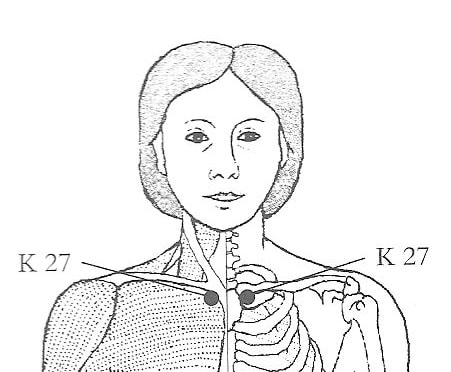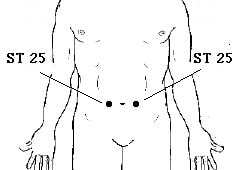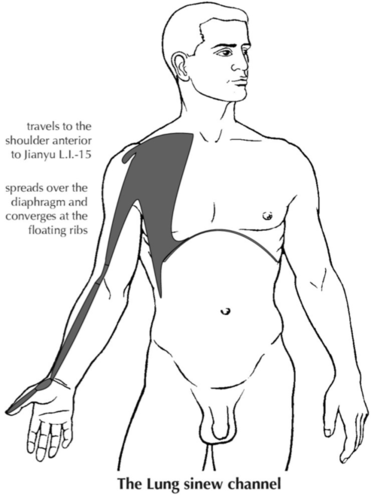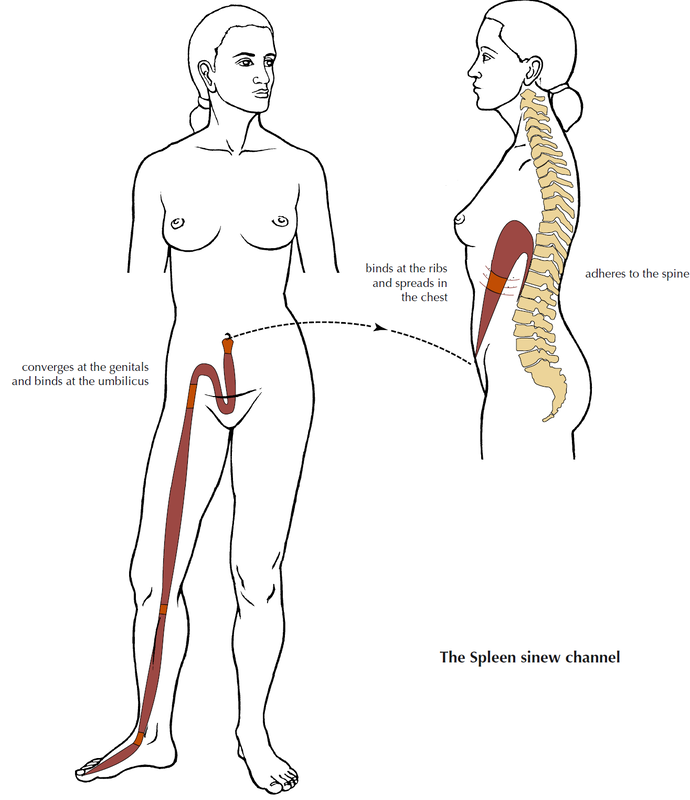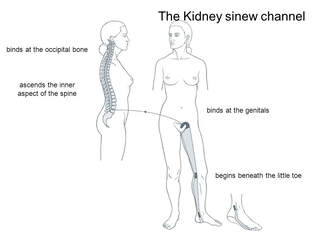YIN YOGA & ACUPRESSURE FOR IMMUNE SYSTEM BOOST
Welcome to two Yin yoga sessions that combine Yin poses with acupressure points to give a boost to the immune system. For those who are interested, there is more information below on what constitutes as "immune system" in Chinese medicine.
You can check out the exact location and information about the acupressure points used in the practices below, but I will also give plenty of explanation during the session.
I hope the sessions help you to find your favorite points so use them daily.
You can check out the exact location and information about the acupressure points used in the practices below, but I will also give plenty of explanation during the session.
I hope the sessions help you to find your favorite points so use them daily.
|
PROPS: block (if sitting on the heels is uncomfortable)
Acupressure points used in this session are: Lung 1 Middle Palace Lung 2 Cloud Gate Large intestine 10 Arm Three Mile Large intestine 11 Crooked Pond Stomach 36 Leg Three Mile |
PROPS: Bolster (optional), block or pillow for head
To skip intro go to: 4min 30 sec Acupressure points used in this session are: Kidney 27 Elegant Mansion/Storehouse Lung 1 Middle Palace Lung 2 Cloud Gate Stomach 25 heavenly Pivot Stomach 36 Leg Three Mile Gallbladder 20 Wind Pool |
Acupressure points for disease prevention and to boost Upright Qi
As Yin yoga poses effectively stimulate the sinew channels, the acupressure points can be used to access the primary channels.
Here find the description and location of the acupressure points used in the Yin practices above. Each of the points can of course be used on their own (without a Yin pose) or in any combination. You can either apply pressure, massage or tap the points for 1-3 minutes.
Here find the description and location of the acupressure points used in the Yin practices above. Each of the points can of course be used on their own (without a Yin pose) or in any combination. You can either apply pressure, massage or tap the points for 1-3 minutes.
|
Lung 1 is called Middle Palace and can be used for most lung related afflictions. It revives the breath, relieves coughing, eases asthma symptoms and chest pain. It is also said to boost sense of self worth, to bring inspiration and restore sense of higher purpose. Lung 2 is called Cloud Gate and similarly helps to open the lungs and helps us breathe more easily. It's advised to use it in times of mourning or depression, when we are clouded with confusion or despair or when we've forgotten our own preciousness. "It invites us to rest in the spaciousness of grief to rediscover our faith in emptiness". |
|
Large Intestine 10 is Arm Three Mile and is a great point for boosting immunity, it tonifies Qi and Blood. It is 2 thumb width towards your thumb from Li11.
Large intestine 11 is is called Crooked Pond and is another great point that aids with fevers, colds and flu and is used as a special tonic point. It also helps with constipation - physical, mental and emotional. It is located right at your elbow crease, palpate around to find a spot that is a bit sore. |
|
Stomach 36 called Leg Three Mile is one of the most important points to tonify Qi and blood. It also strengthens Wei Qi and relieves pain. Use it when fatigued - it invigorates but also nourishes, grounds, calms and centers (at it is an Earth element point). It harmonises digestive system (so good point for holiday times!). It strengthens the body, some texts say to use is regularly after the age of 30. To locate measure 4 fingers down from the base of your kneecap (eyes of the knee) and one thumb width laterally from the shinbone. |
|
Kidney 27 called Elegant Palace (or Storehouse) is another immune system booster point. It is also used to open and relax the chest, to help with asthma, constricted breathing, cough and chest tightness. But also to balance, focus and clear the mind if feeling scattered. This point is also often used to calm anxiety and fear. In Chinese Medicine Kidneys are said to “grasp the Lungs,” meaning they help distribute the air that enters the lungs throughout the rest of the body. |
|
Stomach 25 called Heavenly Pivot - this is not directly an immune system point. I simply love it for nourishment, balance and calm.
Physically, it's a point that is a highly effective point for stomach and intestinal disorders. But as it's name implies (Heavenly / Celestial Pivot) it aids to balance the Yin and Yang - upper body and lower body; top heavy, heady, ungrounded to two feet on the ground; or with too lethargic heaviness it helps to restore vitality. Emotionally helps with mood swings. And finally helping to balance Heavenly Qi and Earthly Qi. In the practice we don't use the point very precisely - we place our whole fist on the side of the navel while lying on the belly. I have found this an interesting way how to use it in a Yin practice. But of course the point can be used like a regular acupressure point - using thumb or fingers to apply pressure. |
|
Gallbladder 20 called Wind Pool is helpful with neck stiffness, headaches, vertigo, blurry vision, tinnitus, common cold, runny nose (allergies), but also for insomnia and tends to have a relaxing and balancing effect on the nervous system. According to Chinese medicine, neck often is where Wind (an external pathogen) can very easily invade the body and "wind being the mother of 100 diseases" as it carries with it other pathogens, it is a good idea to keep the neck well protected from the wind. |
Introduction to Upright Qi
A little background on what can be loosely thought of as "immune system" in Chinese medicine:
Upright Qi (Zheng Qi) is not really another form of Qi but a collection of functions that serve to defend the body from invasion of external pathogens or Evil Qi (Xie Qi). There is no direct correlation to "immune system" in Chinese Medicine, their view of these defence mechanisms of the body are multilayered and more holistic. In Chinese Medicine huge emphasis is placed on disease prevention, using different methods to strengthen ones inner vital energies.
According to Yellow Emperor’s Inner Classic ”if Zheng Qi remains strong, Xie Qi cannot invade the body. Zheng Qi must be weak if Xie Qi invades the body.” Hence our focus on supporting Upright Qi as a way to boost our immunity.
OK - so lets connect this term Upright Qi to our body and practice. What constitutes and affects Upright Qi:
In our practice, these are the channels that we want to access and stimulate when wishing to prevent disease and increase the resilience of our Upright Qi:
Upright Qi (Zheng Qi) is not really another form of Qi but a collection of functions that serve to defend the body from invasion of external pathogens or Evil Qi (Xie Qi). There is no direct correlation to "immune system" in Chinese Medicine, their view of these defence mechanisms of the body are multilayered and more holistic. In Chinese Medicine huge emphasis is placed on disease prevention, using different methods to strengthen ones inner vital energies.
According to Yellow Emperor’s Inner Classic ”if Zheng Qi remains strong, Xie Qi cannot invade the body. Zheng Qi must be weak if Xie Qi invades the body.” Hence our focus on supporting Upright Qi as a way to boost our immunity.
OK - so lets connect this term Upright Qi to our body and practice. What constitutes and affects Upright Qi:
- Defensive Qi (Wei Qi) - controlled by Lungs. This is your body's first line of defence, so to speak. It's a more coarse form of Qi that circulates outside the channels, more on the surface layer between the skin and the muscles. It protects body against external pathogens, warms the muscles and regulates the opening and closing of pores. Runs through the sinew channels - more surface layer channels that are easily accessed via Yin yoga poses. See the sinew channel pathways for Lungs, Spleen and Kidneys below.
- Original Qi (Yuan Qi) - derived from Kidneys. Kidneys are the source of all Yin and Yang energies of the body and house precious Essence called Jing , which is fundamental to the formation of Upright Qi.
- Gathering Qi (Zong Qi) - produced in the chest from the air you breath (Lungs) and the essence of the Food you eat (Spleen). It nourishes Heart and Lungs, promotes lung function of controlling Qi and respiration.
- Nutritive Qi (Ying Qi) - Qi that runs deeper in the body through the primary channels, it nourishes the internal organs and the whole body.
In our practice, these are the channels that we want to access and stimulate when wishing to prevent disease and increase the resilience of our Upright Qi:
